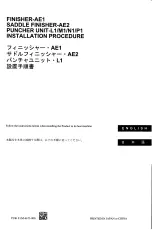
User's Guide HDSPe MADI
© RME
69
Because the HDSPe MADI is a completely digital interface, and the delays introduced by exter-
nal AD/DA-converters or other digital interfaces are unknown to unit and driver, the drivers in-
clude the digital offset values (3 / 6 / 12 samples). Therefore the delays caused by external
converters have to be taken care off in the record software, which usually means that the user
has to enter specific offset values manually.
Note: Cubase and Nuendo display the latency values signalled from the driver separately for
record and playback. The current driver includes a safety offset of 32 samples for the playback
side only, which will be included in the shown value.
Core Audios Safety Offset
Under OS X, every audio interface has to use a so called
safety offset
, otherwise Core Audio
won't operate click-free. The HDSPe MADI uses a safety offset of 32 samples. This offset is
signalled to the system, and the software can calculate and display the total latency of buffer
size plus offset plus safety offset for the current sample rate.
30.4 DS - Double Speed
When activating the
Double Speed
mode the HDSPe MADI operates at double sample rate.
The internal clock 44.1 kHz turns to 88.2 kHz, 48 kHz to 96 kHz. The internal resolution is still
24 bit.
Sample rates above 48 kHz were not always taken for granted, and are still not widely used
because of the CD format (44.1 kHz) dominating everything. Before 1998 there were no re-
ceiver/transmitter circuits available that could receive or transmit more than 48 kHz. Therefore a
work-around was used: instead of two channels, one AES line only carries one channel, whose
odd and even samples are being distributed to the former left and right channels. By this, you
get the double amount of data, i. e. also double sample rate. Of course in order to transmit a
stereo signal two AES/EBU ports are necessary then.
This transmission mode is called
Double Wire
in the professional studio world, and is also
known as
S/MUX
(abbreviation for
Sample Multiplexing
) in connection with the multichannel
ADAT format. The AES3 specification uses the uncommon term
Single channel double sam-
pling frequency mode
.
Not before February 1998, Crystal shipped the first 'single wire' receiver/transmitters that could
also work with double sample rate. It was then possible to transmit two channels of 96 kHz data
via one AES/EBU port.
But
Double Wire
is still far from being dead. On one hand, there are still many devices which
can't handle more than 48 kHz, e. g. digital tape recorders. But also other common interfaces
like ADAT or TDIF are still using this technique.
With MADI, sample multiplexing is often used as well to offer sample rates higher than 48 kHz.
The HDSPe MADI supports all formats. 96 kHz can be received and transmitted both as 48K
Frame (using S/MUX) and as native 96K Frame. In 48K Frame Double Speed mode, the
HDSPe MADI distributes the data of one channel to two consecutive MADI channels. This re-
duces the available channel count from 64 to 32.
As the transmission of double rate signals with 48K Frame is done at standard sample rate
(Single Speed), the MADI ports still operate at 44.1 kHz or 48 kHz.
Summary of Contents for HDSPe MADI
Page 5: ...User s Guide HDSPe MADI RME 5 User s Guide HDSPe MADI General ...
Page 33: ...User s Guide HDSPe MADI RME 33 User s Guide HDSPe MADI Connections and TotalMix ...
Page 40: ...40 User s Guide HDSPe MADI RME ...
Page 62: ...62 User s Guide HDSPe MADI RME ...
Page 63: ...User s Guide HDSPe MADI RME 63 User s Guide HDSPe MADI Technical Reference ...




































